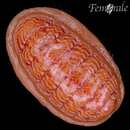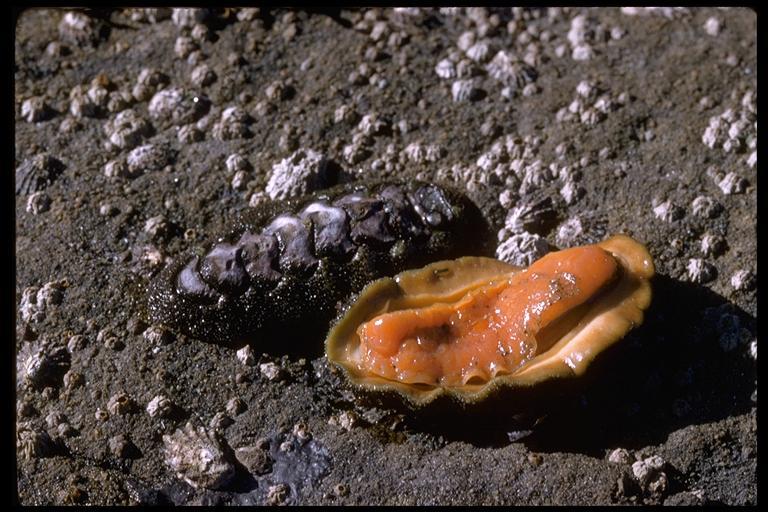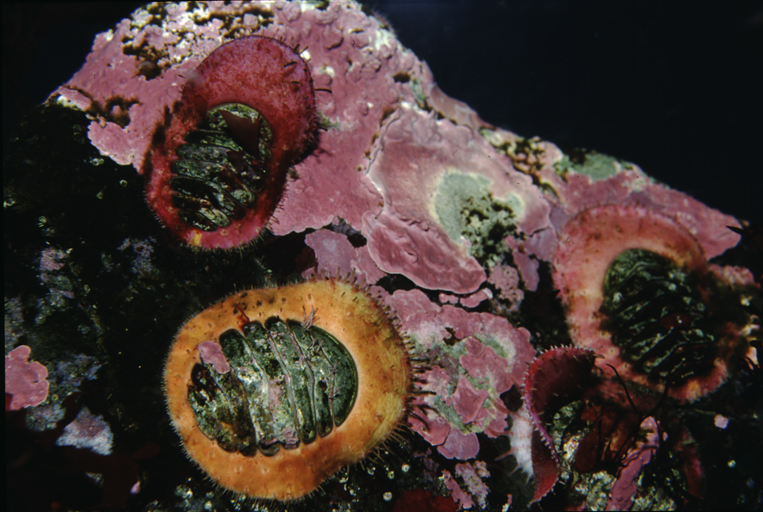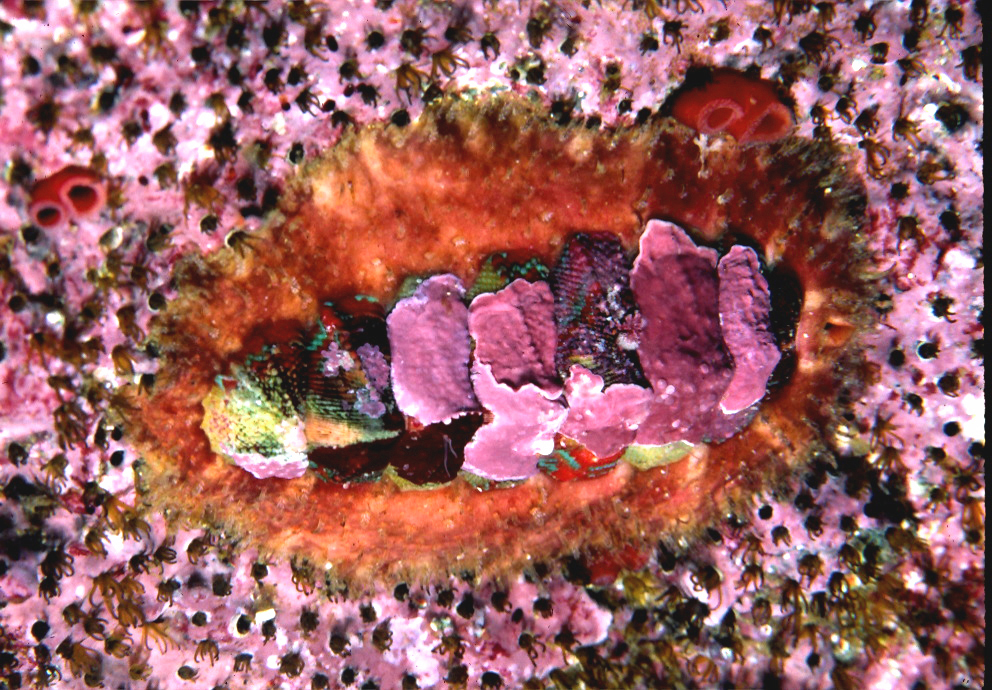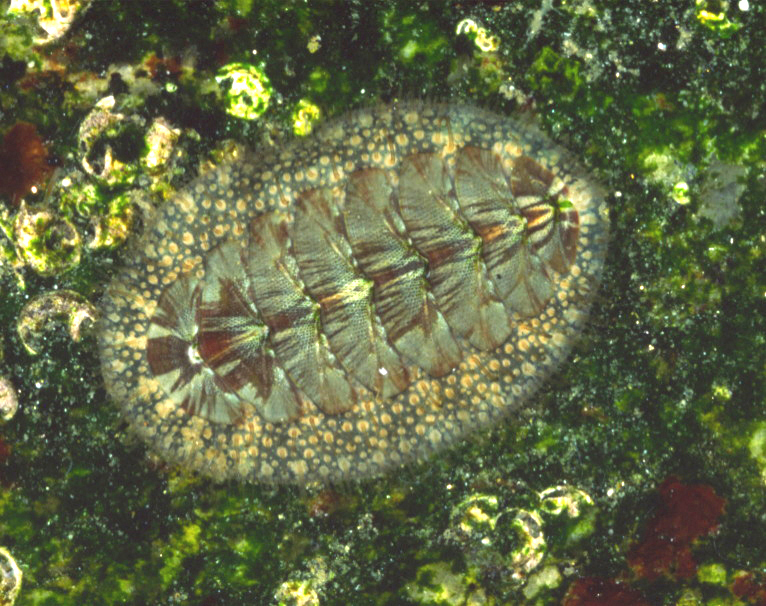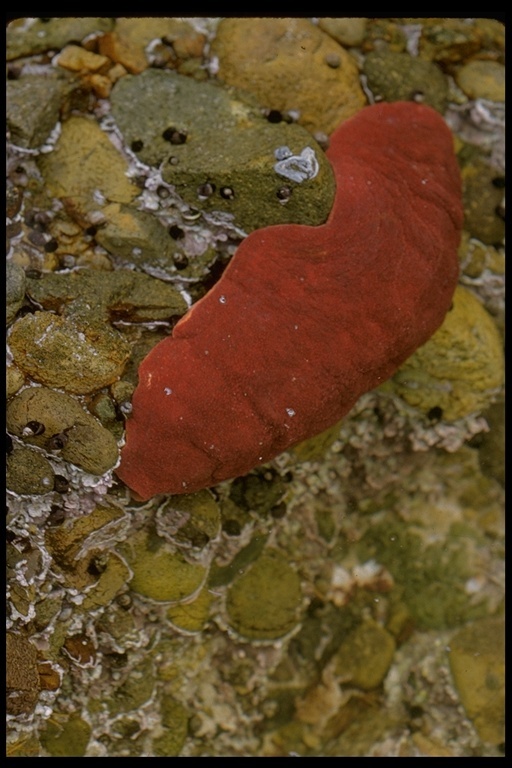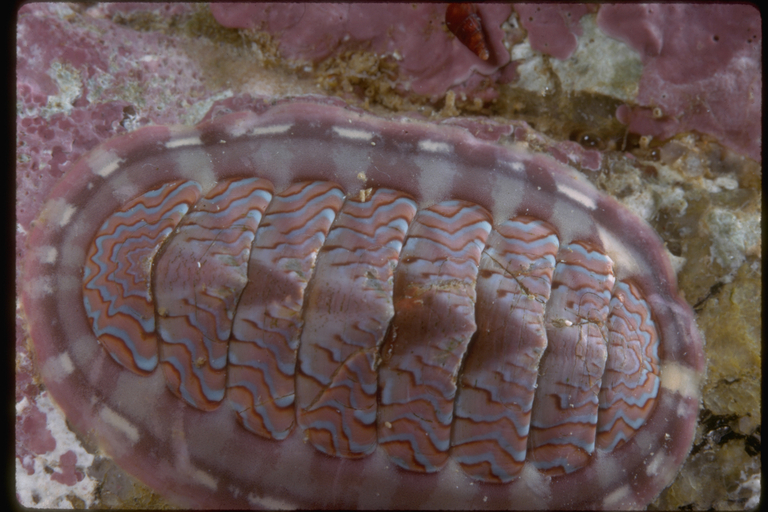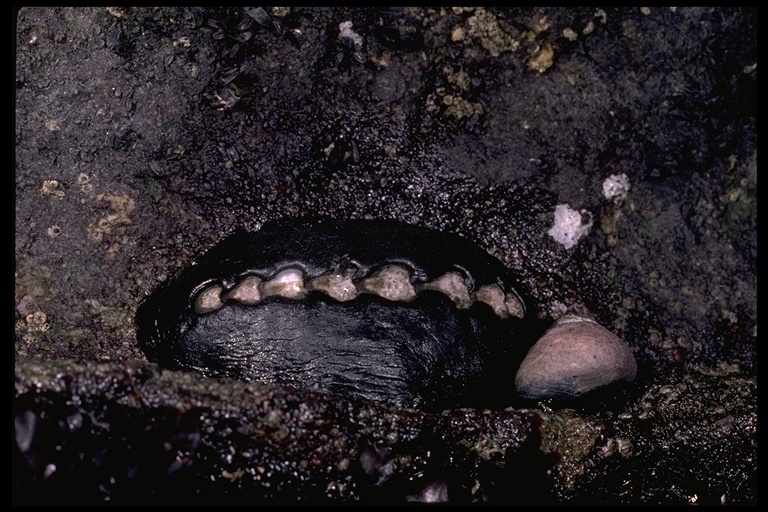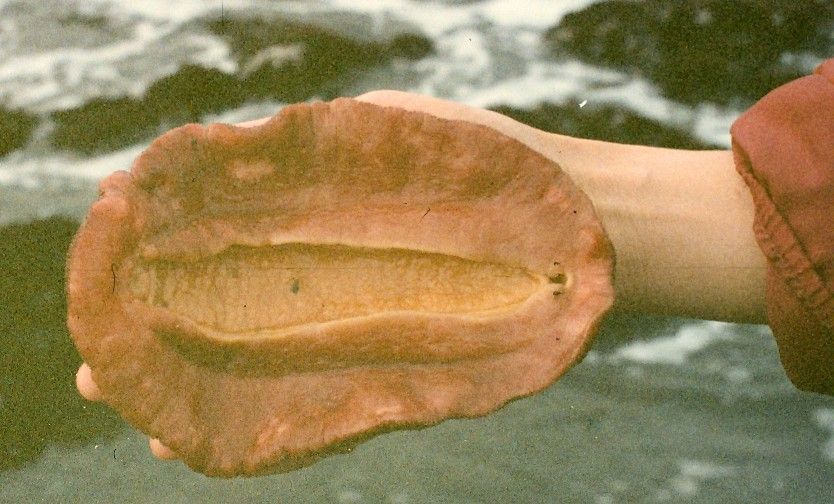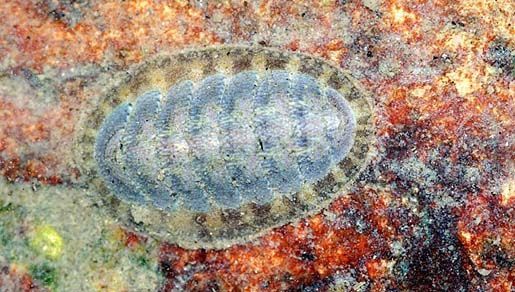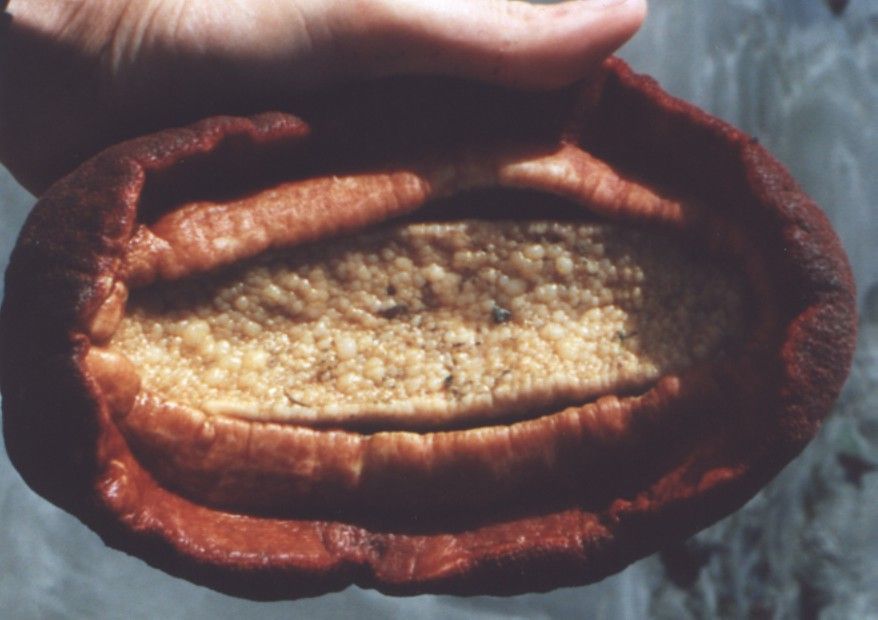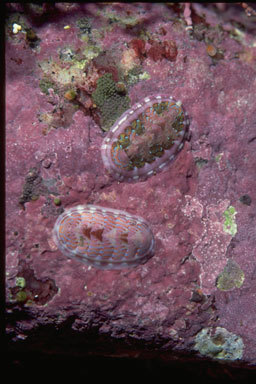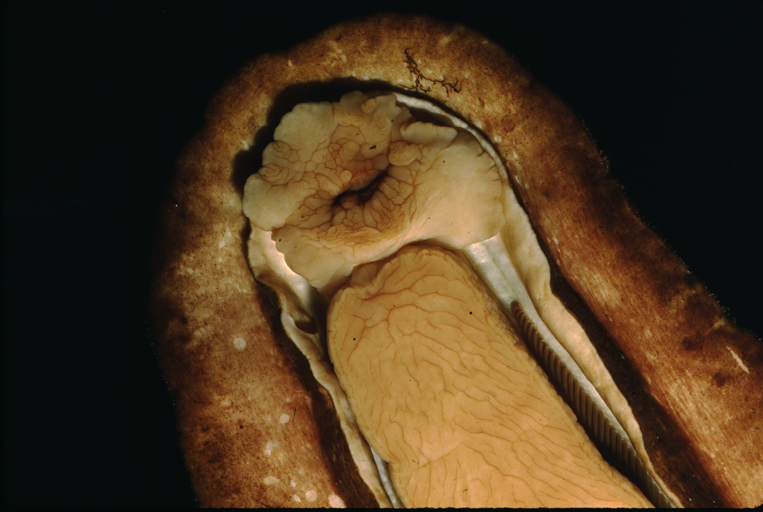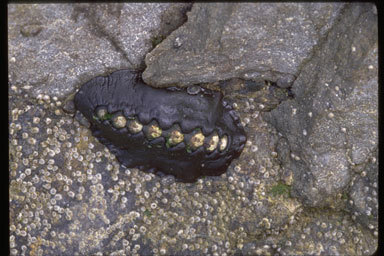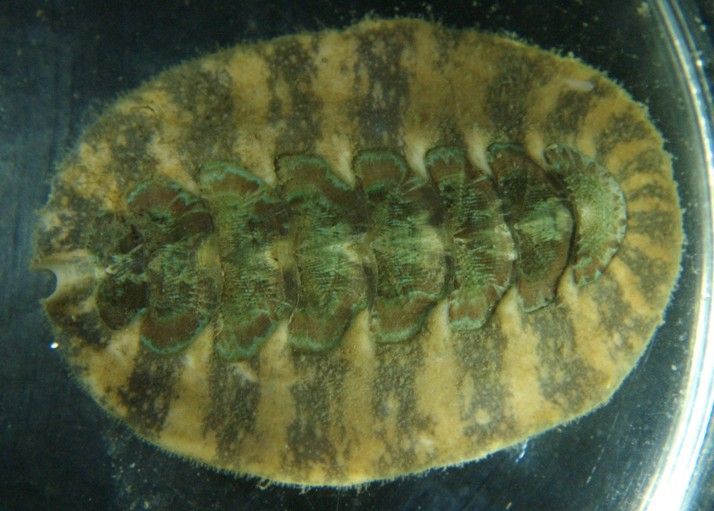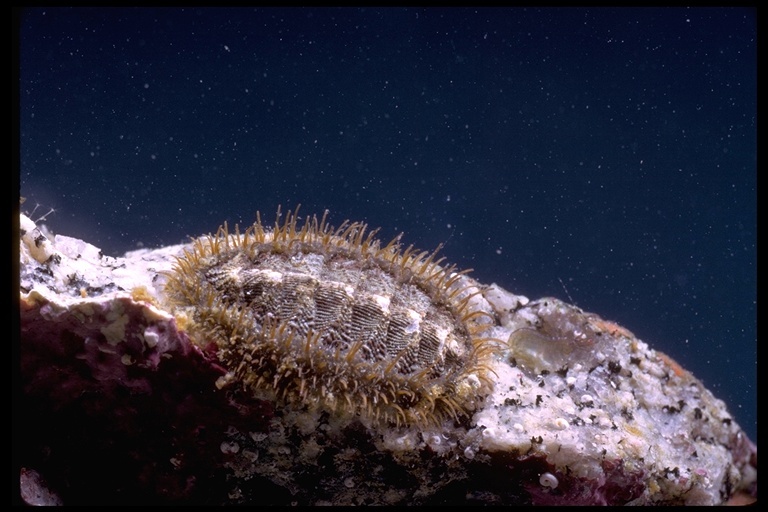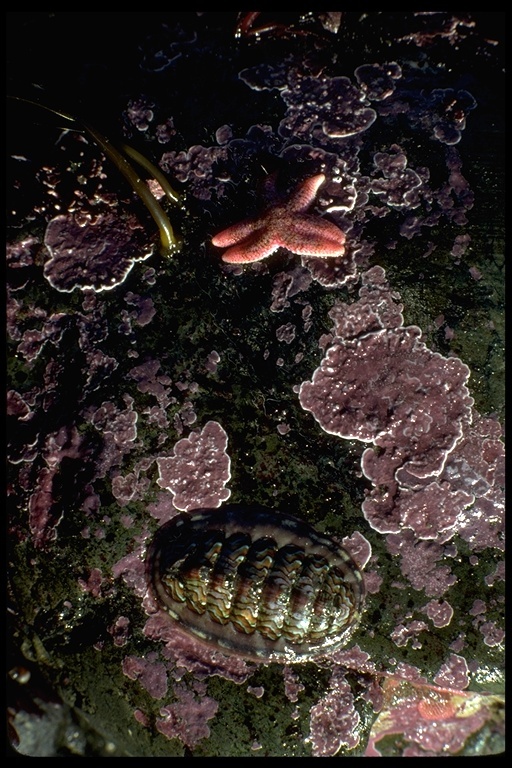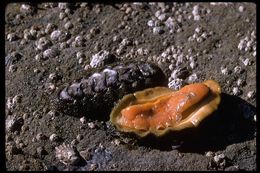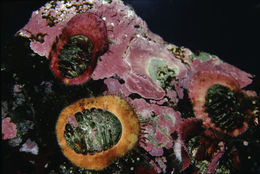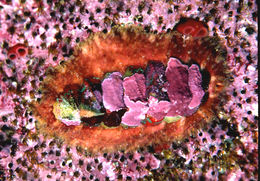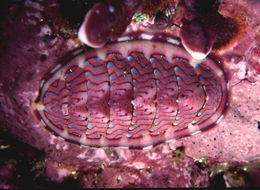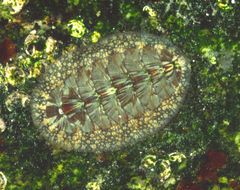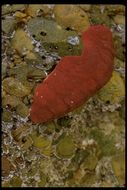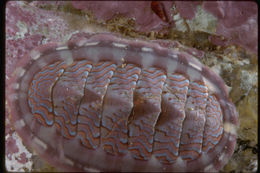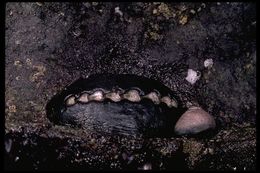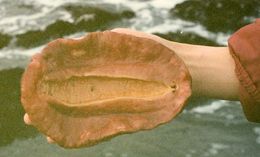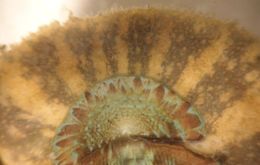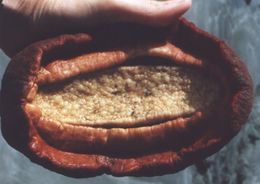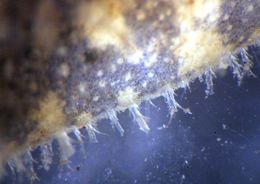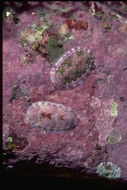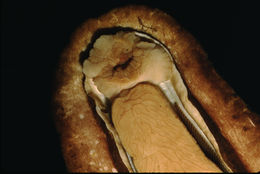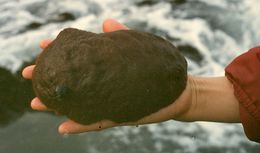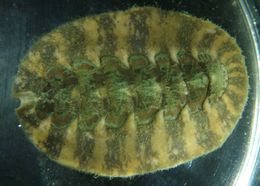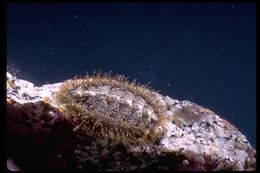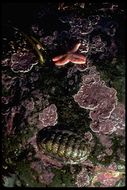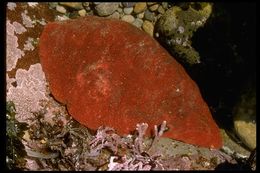-
-
1998 California Academy of Sciences
CalPhotos
-
2014 California Academy of Sciences
CalPhotos
-
2005 California Academy of Sciences
CalPhotos
The chitons' eight plates differentiate them from all other molluscs. These omnivores spawn grey-green eggs, and fertilization occurs externally. Miniature adults form by sixteenth day.
-
2005 California Academy of Sciences
CalPhotos
Herbivore found on crustose and erect coralline algae, its major food and the source of its pigment. 15 mm long, 10 m deep. Its scraping organ, the radula, contains magnetite, hard enough to scrape the corallines. The chitons are broadcast spawners with external fertilization.
-
1999 California Academy of Sciences
CalPhotos
-
2006 California Academy of Sciences
CalPhotos
This chiton is known to feed on algae; here it is seen on the green alga Ulva.
-
2001 California Academy of Sciences
CalPhotos
-
2008 California Academy of Sciences
CalPhotos
-
2001 California Academy of Sciences
CalPhotos
-
The underside of this species is composed of a flat foot with a row of gills along each side (gills not visible in this photo). The edges of the mantle form a wide belt around the foot. Photographed by Dave Cowles at San Simeon, CA 1995
-
The head plate (plate 1, seen here) is about the same width as plate 8, and the girdle is about the same width in front as on the sides. The girdle has neither scales nor tubercles, but it does have fine, scattered hairs which are so fine and sparse that it is hard to see them except along the edges.
-
Foto Fitis, www.fotofitis.nl
Ecomare
Lepidochitona cinerea; Asgrauwe keverslak.
-
Another photo of the underside. Photo by Dave Cowles, San Simeon, CA April 1997 This species was formerly abundant at San Simeon, CA. During the latter years of the 1990's I (Dave Cowles) observed large numbers decomposing and washing up onto the beach. I suspect a disease was affecting them. Those washing ashore were blotched, as some living individuals are. I wonder if the blotching seen in living individuals is a sign of disease? Far fewer can be found there now.
-
The girdle hairs are sparse and fine. They can hardly be seen except, for example, here along the edge of the mantle at high magnification. The fine filaments which sprout from the hairs are often in two rows of curved, diverging bristles on opposite sides of the main hair and have a glassy spicule on the end. Photo by Dave Cowles, August 2012
-
1999 California Academy of Sciences
CalPhotos
-
2009 California Academy of Sciences
CalPhotos
-
2014 California Academy of Sciences
CalPhotos
-
2009 California Academy of Sciences
CalPhotos
-
Cryptochiton stelleri San Simeon, CA (Photo by: Dave Cowles, 1995)
-
Mopalia swanii, about 5 cm long. Anterior end is to the right. (Photo by: Dave Cowles, August 2012 )
-
1999 California Academy of Sciences
CalPhotos
-
1999 California Academy of Sciences
CalPhotos
lined chiton
-
1999 California Academy of Sciences
CalPhotos

